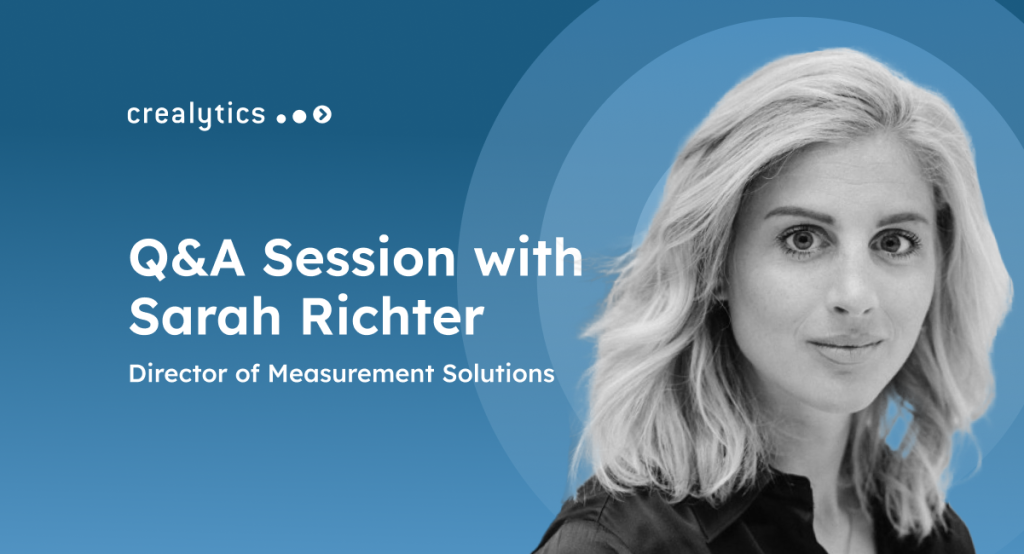Beginning to question the accuracy of results coming out of your ad platforms and attribution model? Last week, we spoke with Sarah Richter, our Director of Measurement Solutions to find out how she advises performance marketers at eCommerce brands who are in this situation.
Get her perspective on a few common “vanity metrics” that lead many performance marketers astray –and which metrics are better suited to tracking success against business goals.
Q: As a performance marketer, what do you recommend if I’m losing confidence in the results coming out of my ad platforms?

Sarah Richter: When we talk about bad measurement or methodologies, what we need to understand is that there’s no such thing as the perfect measurement methodology.
Every methodology comes with certain flaws and shortcomings. If you asked me what the perfect measurement solution for budget allocation would be on a channel level, I would suggest Media Mix Model (MMM) because it decompensates your incremental sales to different channels.
But if you then talk to maybe another person who is way more into the nitty-gritty operations on a daily basis, they would need campaign- level measurement running—like multi-touch attribution.
Q: What measurement approach would you recommend to marketers who are looking to cover all the bases?

Sarah Richter: At Crealytics, we take a triangulated approach to measurement.
This starts with a media mix model (MMM). As data privacy increases, media mix models are becoming more popular, but you’ll want to back it up with incrementality tests –basically real-life geo-based experiments.
Incrementality tests make sure that your media mix model is based on reality, especially for your biggest channels. And you can do that by running tests and ingesting those results into your media mix model, so that it can still produce accurate results during non-tested periods.
Now, we still recommend using multi-touch attribution, because media mix modelling will struggle to attribute down to a campaign level. And you won’t be able to do incrementality tests at a small campaign level, because you won’t reach significance with those.
If you use multi-touch attribution, it’s important to control for the biases that are inherent with this model to fill in those gaps and make sure that you can make decisions on where to spend your budget within channels across campaigns.
Q: Ok. So with the right measurement solution in place, what should we be measuring vs not measuring? What’s an example of a common vanity metric?

Sarah Richter: A super common vanity metric that gets measured but doesn’t tell you much is revenue. Almost all performance marketers in retail measure revenue. But what does it really tell you? Basically nothing; it’s one-dimensional and doesn’t reflect true growth or your profitability.
Q: Can you give a real-life example of how measuring revenue can lead you astray? If you are an eCommerce brand, for example…

Sarah Richter: Let’s assume you’re a fashion retailer running a big sale. Your business objective is to increase profitability. Probably, your revenue is going up because a lot of people are purchasing your product. But if you take a look behind the curtain, this doesn’t reflect profitable growth. It probably does not even feed into your business goal–it’s just an increase in revenue.
You’d be better off making your north star KPI profitability.
By measuring profitability, you get the opportunity to measure the true ROI of your marketing campaigns, free from any inflation.
Measuring profitability instead of revenue establishes a foundation for a robust cost-to-cash ratio within your business.
Q: Got it. Instead of revenue, we should be measuring profitability. Any other good examples of what we should vs. shouldn’t be measuring?




Sarah Richter: So, if a business’ goal is growth, then most marketers would opt to measure “growth in new customers”. However, “new customers” is another very one-dimensional metric. It can go up or down, but it may not directly translate into business growth.
Here are a few reasons why:
- Some new customers could be only one-time buyers, which will cost you a fortune to acquire, but then never return to buy.
- Even if new customers come back, the cost to retain them might be higher. Acquiring a customer who is predicted to come back may require additional ad spend.
- Some customers may naturally return via direct entries to the website or via ‘cheap’ brand campaigns, whereas others might require extra efforts like running retention or retargeting campaigns or offering vouchers in order to retain them.
- Hence, it’s essential to ensure that these costs don’t surpass the predicted customer lifetime value, as retaining specific customers may become unprofitable.
If your business objective is growth, I recommend focusing on measuring Customer Lifetime Value rather than solely concentrating on the number of new customers.
Q: How does measuring customer lifetime value lead to growth?




Sarah Richter: Measuring customer lifetime value will give insight into the quality of newly acquired customers. It will show you whether they will contribute to the sustainable growth of your business or if—as I mentioned before—they are only one-time buyers who never return.
When you only look at the price for each new customer, what you need to take into consideration is that growth always comes at a cost– for example, it could be a loss in profitability.
It’s important to always factor this in for future plans.
Key Takeaways
Overall, it’s important to choose your metrics wisely. Opt for KPIs aligned with true business objectives over superficial vanity metrics. As we covered, measuring revenue is not a proxy for growth. Rather, focus on profitability through key performance indicators like margin and customer lifetime value to align with your true business objectives.
2. Prioritize Sustainable Growth: Target customers with high lifetime value to minimize retention costs and ensure long-term, sustainable business growth.
3. Acquire New Customers with a High CLV: As it will cost less to retain those customers, ultimately translating into sustainable business growth.




